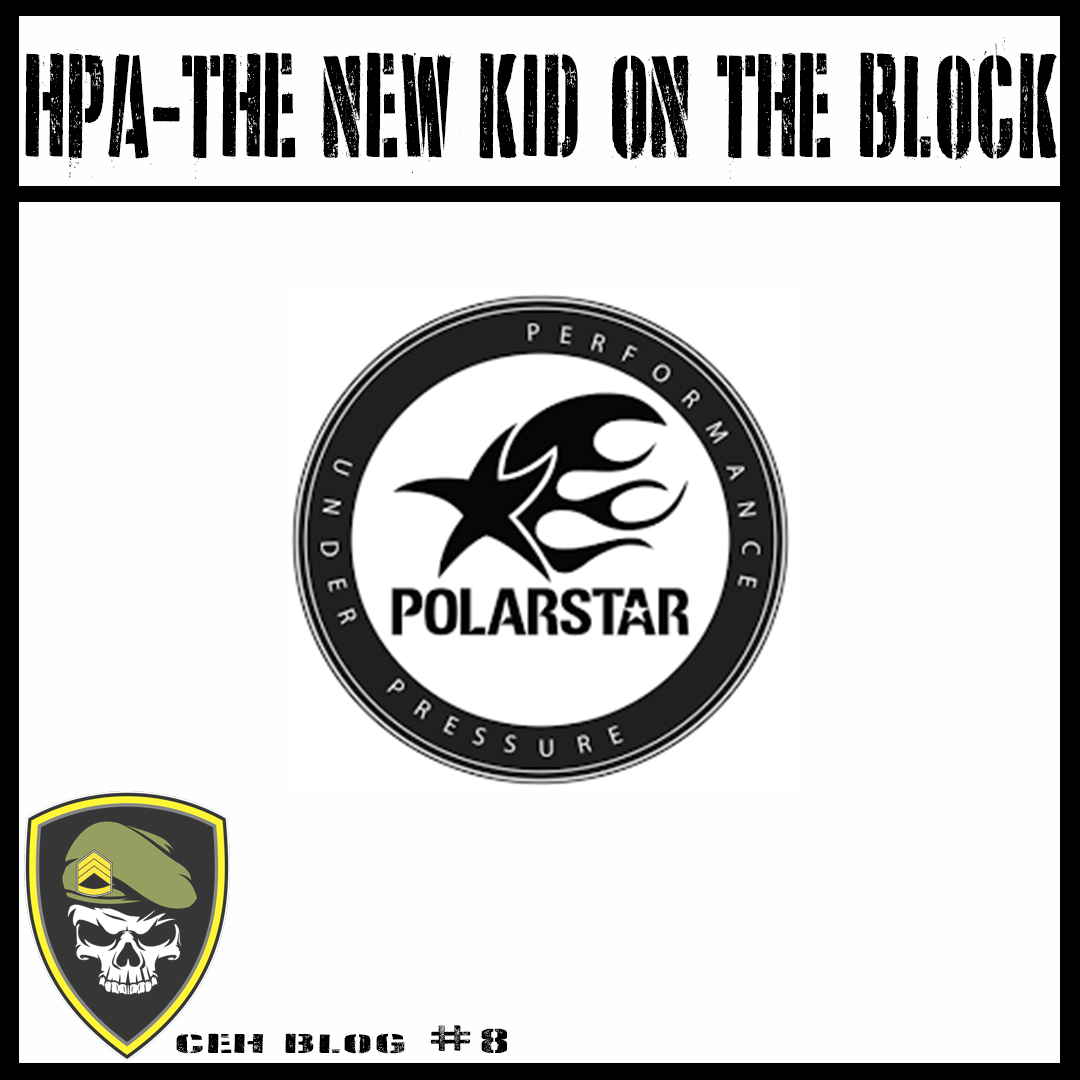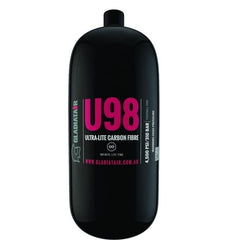
High pressure air (HPA) systems are a type of pneumatic gelsoft blaster which uses externally supplied high pressure. They work by using a separate high-pressure air tank, connected to the blaster via a hose, which in turn is connected to the pneumatic motor inside the blaster (called an "engine").
How does HPA work?
The main idea of a High pressure air (HPA) rig is to deliver air at a constant PSI. It does this by using a system of regulators, hoses, and fittings. This air will flow into your main regulator and be brought down to a usable PSI, which is around 40 to 130 PSI. The system is powered by a Fire control Unit (FCU), which can adjust its settings to the desire effect; rate of fire / dwell (determines how much air is released with each shot).
Bottle:
Your HPA bottle will hold between 3000 to 4500 PSI. It is crucial to not cheap out on these tanks, buy a reputable brand such as Gladiatair. There are many different composites of tanks - Alloy / alloy center, carbon outer / carbon tanks. Carbon tanks cost more, but are much lighter. Sizes vary from 13ci up to 122.

The important things to know about these are capacity and output pressure. Capacity is the volume of the tank (cubic inches) and the pressure it can store the air at (PSI). Let's say we have a tank that is 68/4500. The 68 is the internal volume in cubic inches, while the 4500 is the PSI limit for that tank. Most aluminum tanks have a max PSI of 3000 while carbon fiber and other specialty tanks can hold 4500. Output pressure is the pressure coming out the tank when it is opened. Tanks usually have built in regulators which commonly for gelsoft regulate the air to either 300 or 800 PSI
Regulator:
The regulator brings down the output pressure of the tank to one that the system can use. Most systems can only us e up to 130 PSI max and that's really pushing it.
e up to 130 PSI max and that's really pushing it.
Output pressure of the tank can also determine what kind of regulator you need. Tanks that have an 800 PSI output need something that can handle that pressure. The Wolverine Storm and Polarstar regulators are both up to handling the pressure.
Engine:
There are two types of pneumatic engines. Open and Closed bolt.
A closed bolt engine has a forward biased nozzle. That means that when at rest and ready to shoot the nozzle is fully forward and sealed against the T pieces inner lip.

Once the trigger is pulled the nozzle fully retracts to allow a gel to enter the t piece. The nozzle then returns fully forward, positioning the gel into the t piece and sealing on the t piece inner lip.
Typically it takes 2 separate solenoids to make a closed bolt HPA engine function. One to control the movement of the nozzle and one to control the air used to fire the gel (poppet)
This adds cost and user setup complexity.
On an open bolt engine the nozzle is rearward biased. That means that when at rest and ready to shoot, the position of the nozzle is fully rearward. The position of the gel can vary.
Once the trigger is pulled, air pressure moves the nozzle forward when the nozzle reaches the fully forward position the nozzle seals against the t piece inner lip and the gel is shot out of the barrel. Once the solenoids dwell time has expired the air stops flowing through the nozzle and the nozzle retracts.
Open bolt engines can use only a single solenoid, and are typically easier to manufacture since they are of a simpler design. That make them cheaper, and can be a bit easier for the user to setup.
Closed bolt engines are typically considered to have greater accuracy due to more consistent seating of the gel into the t piece from shot to shot.
The Polarstar F2 uses a dual solenoid setup.
The Polarstar Jack uses the single solenoid setup.
Why choose HPA?:
There are a few factors to consider when purchasing a HPA system. HPA systems give much more tuneability, being able to change the FPS output as well as the Rate of fire relativity easy. They also require less maintenance, have less moving parts compared to an aeg, and are regarded as being much more reliable. They are of simplistic design where less time is spent on the initial install yet more time is spent in tuning via the FCU board (generally speaking).
You will require somewhere to get your tanks filled, and you are now carting around a tank on your back as well as a line. But is this enough to turn off HPA? I dont believe so; if your running a decent camel back / hpa backpack, a decent size line suited to your body size (36inch or 42inch), and a quality tank, none of these become real issues. Command Elite Hobbies now offer filling station services, at $10 a bottle.
I personally have been using HPA for a few months, and I have been converted. This is because of its ease of use. It eliminates a lot of the tedious parts of the sport such as fixing your blaster and the strenuous maintenance.
While the initial cost of a HPA system is high (tank/reg/line/engine/blaster) over time the cost levels out with an aeg. The reason I say this is because aeg (generally speaking) will need more servicing and repairs. The ongoing cost of HPA is your tank refills ($10), an O-ring kit ($5) or if your really unlucky a Solenoid ($120).
Will hpa replace aeg? The short answer is no. There will always be a place for aeg blasters. Hpa is the new kid on the block and is an amazing bit of kit but has a high initial price, and requires tank refills. Aeg blasters are more affordable, especially for the new comers to the sport who just want to get a blaster and hit the field. Not to mention there are plenty of modification options and spare parts available in the country.
The people who want to spend big money and want a full custom blaster, hpa is definitely something to consider.
Happy Blasting
Giles
MDK Raptors

How much and do they go in a HK416D